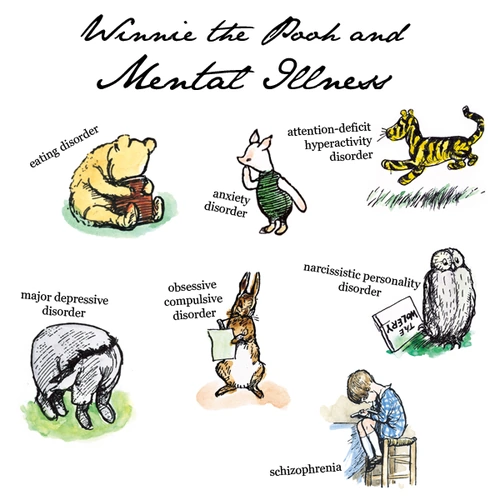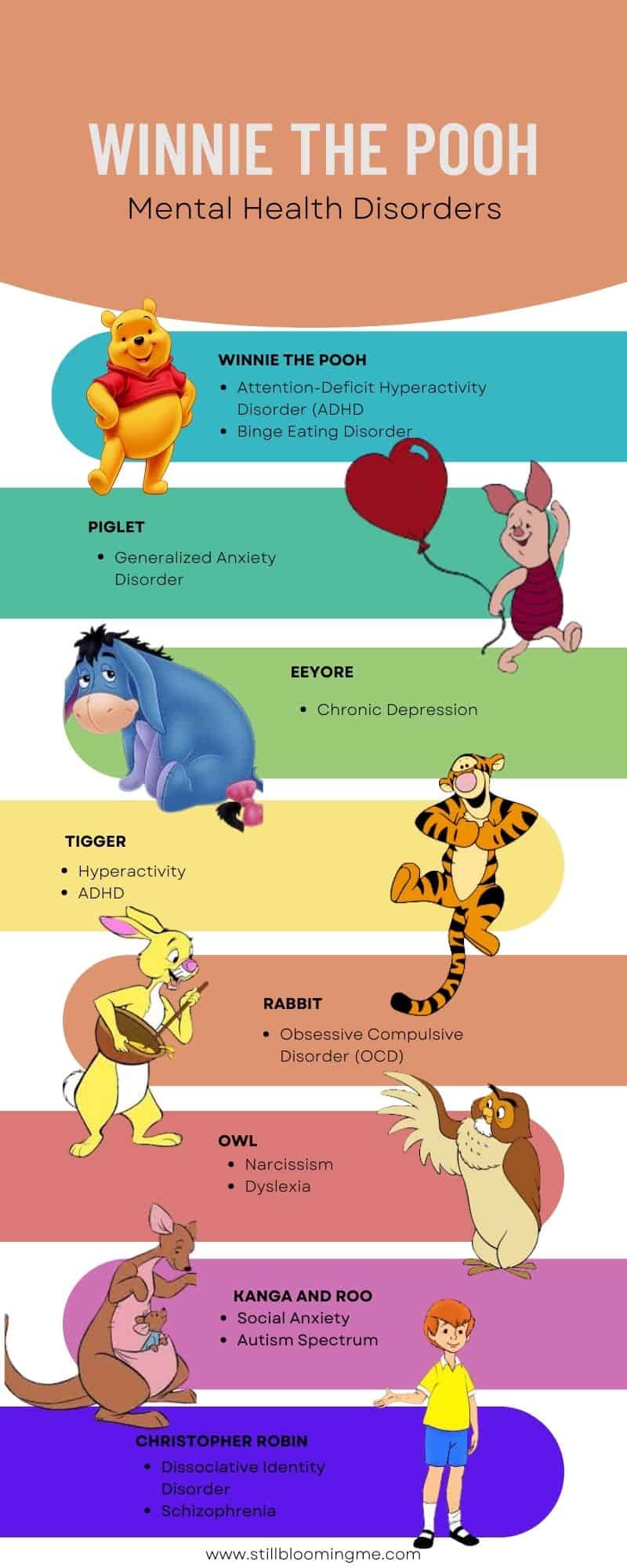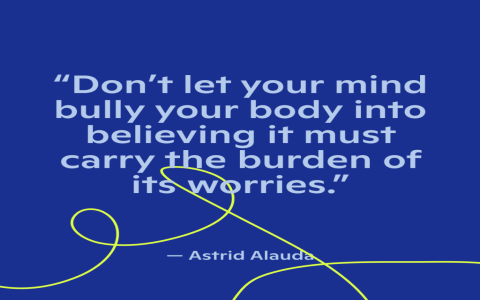Hey there, everyone! I’ve been digging into something pretty interesting lately, and I just had to share it with all of you. We’re going to chat about something a little different today – “Winnie the Pooh” and mental health. Yeah, you heard that right! Let me tell you how this all started.
So, the other day, I found myself just flipping through some articles online, and I stumbled upon this piece talking about how the “Winnie the Pooh” characters might represent different mental health conditions. At first, I thought, “What? That’s a bit of a stretch, isn’t it?” But the more I read, the more I realized, “Hey, this actually makes some sense!”

I started by reading up a lot on this. I mean, we all grew up with these characters, right? Winnie the Pooh, Piglet, Tigger, Eeyore – they’re like old friends. I began to look at them in a new light. For example, Pooh’s constant need for honey? One article pointed that could be seen as an eating disorder. And his repetitive behaviors, they might be signs of OCD.
- Winnie the Pooh: Always craving honey, maybe it’s an eating disorder, and his habits? Some suggest OCD.
Then I moved on to Piglet. That little guy is always so worried and scared! It hit me – maybe Piglet embodies anxiety. The way he’s always fretting, always unsure. Yeah, I could see that. I even jotted down some notes on how his behaviors seem to match with symptoms of anxiety.
- Piglet: Always scared, always worried, could this be anxiety?
And Tigger, oh boy, Tigger! I watched a few clips of him, bouncing all over the place, never able to sit still. I compared that to what I read about ADHD – the hyperactivity, the impulsiveness. It seemed to fit like a glove! I actually laughed out loud when I realized how well Tigger’s personality matched with the descriptions of ADHD.
- Tigger: Bouncing off the walls, full of energy, never stopping – sounds like ADHD.
Next, I focused on Eeyore. He’s always so gloomy and down in the dumps. I researched a bit about depression and realized that Eeyore displays a lot of the classic signs – the sadness, the lack of energy, the negative outlook. I even made a small chart in my notebook, comparing Eeyore’s traits to the symptoms of depression. It was pretty eye-opening.
- Eeyore: Always gloomy, always down, it seems like he represents depression.
I also looked into the idea that some characters might have something called borderline personality disorder, which sounds intense! The articles explained it as having really strong, up-and-down emotions, which made me think about how certain characters react in the stories. I’m not sure about this one, but it was interesting to consider.
After spending hours on this, I started seeing these characters in a whole new way. It’s like, they’re not just these simple, fun characters anymore. They might actually represent real-life struggles that people go through. I even talked to a friend about it, and we had a long discussion, debating which character matched which condition.
I ended up creating this whole big mind map, connecting each character to different mental health conditions based on what I had read and observed. It was a real “aha” moment for me. I realized that these characters, which we often see as just for kids, could actually help us understand and talk about mental health in a more approachable way.

My Main Takeaways
So, what did I learn from all this? Well, first off, it’s fascinating how these beloved characters can be seen through a different lens. It makes you think about how mental health is all around us, even in the most unexpected places. It also shows that it’s okay to talk about these things. I mean, if we can see these traits in characters we love, maybe it makes it easier to discuss them in real life.
I’m not saying that the creators of “Winnie the Pooh” intentionally did this, but it’s a pretty cool way to look at these stories. It definitely gave me a new perspective, and I hope it does the same for you. Let me know what you think – I’m really curious to hear your thoughts on this!















